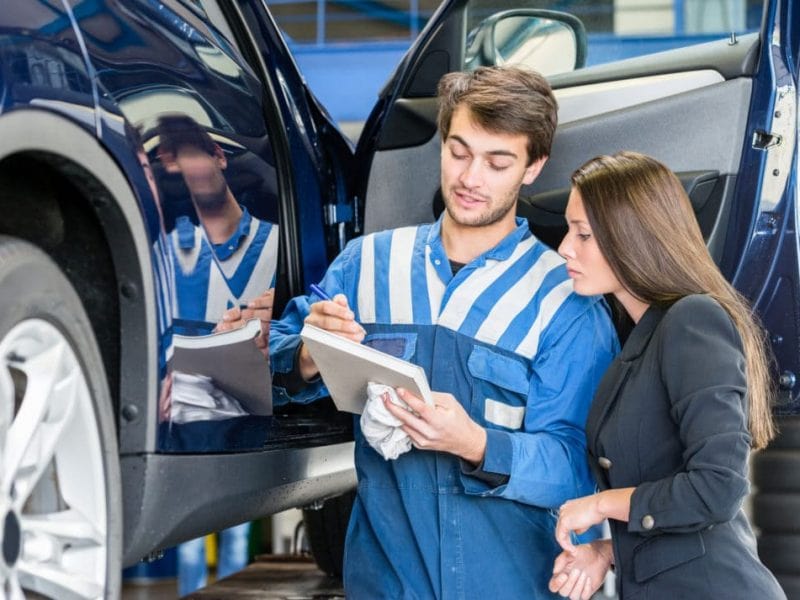
Do you want your vehicle to last for many more years? Check out the essential tricks to make sure that time passes and your car stays as good as new.
Many of the problems that our vehicle suffers are avoidable. This is demonstrated by our trusted mechanic every time we bring our vehicle to you with a fault.
Are you one of those who don’t check the oil level regularly? Do you take into account the thickness of the tire tread? Do you wait for your vehicle’s engine to warm up? If you want your car to live longer, you’ll have to start internalizing tips like these – get your car to live almost forever!
Check the condition of your tyres regularly
Keeping your car’s tyres in perfect condition will ensure a long life for your car. In this respect, we should often look at two basic characteristics of the wheels: tread and pressure.
As for the tread, we remind you that it must be between four and eight millimetres deep. Otherwise, any element that you find on the asphalt can pose a risk to your car. These measurements are essential, especially when it is raining.
Tyre pressure is vital for the life of your car to be as long as possible. Where can you go to check this feature of your tyres? You can either visit certain petrol stations with pumps to vary the pressure of your tyres or go to your garage to have your car checked. Don’t worry if you don’t remember the recommended tyre pressure, the vehicle handbook will tell you!
Checking the oil level
Many ignore these kinds of recommendations, yet every week hundreds of people are left stranded on the road because they have not checked the oil level in their car. The engine needs a certain amount of oil, and if this amount is lower, the engine can break down forever.
An engine breakdown due to a lack of oil is one of the worst situations you can face. Therefore, the best thing you can do is to check this level once a month or before a long trip. That way, your car will live longer and you’ll save yourself grief as well as money.
Wash your car often
Maintaining good hygiene both inside and outside the vehicle is key to keeping it looking new and shiny. Carwashes, although the fastest solutions, do not reach all points of dirt. It is therefore advisable to combine them with manual pressure washing. In this way, we will manage to get rid of the most hidden and difficult to remove stains.
It is important to remove any element that gets into the air conditioning inlets. The rubber gaskets are another element that you must take care of and clean with the right products. Otherwise, they will wear out and give your car an undesired dirty look.
Frequent car washing is, apart from one of the tricks to extend the life of your car, one of the tips to keep your car cool in summer. If you want to know the rest of the recommendations of this type, click on the following link.
Protect your car’s paintwork and windshields
If there’s one part of our vehicle that suffers, it’s the bodywork. Throughout its life, the car faces numerous external setbacks that can damage it: tree resin, bird droppings, rain, frost or intense sunshine, among others.
Adding up all these attacks year after year, the consequences on our car’s paintwork can be quite serious. Can we do anything to avoid them? There is an effective solution: car waxes. These serve to protect the paintwork, as they apply a varnish effect to the vehicle’s bodywork. Apart from adding this defence, it enhances the colour of the car – your car will look like the first day.

Tricks to take care of your car’s clutch
We are mistreating one of the most important parts of our vehicle more than we should: the clutch. We are very often imprudent with this lever that is so essential for manual vehicles.
The most common are the following:
- Shifting gears. There are two clear mistakes that are made when changing gears. The first is to fully depress the clutch when you put it in gear, while the second is not to release it completely when you have already done so.
- The foot on the clutch pedal. Another fault that we carry out while driving is to put our left foot on the clutch when we are not using it. This foot must rest in the area provided to the left of the pedal.
- Keep your foot on the pedal at traffic lights. The clutch must not be pressed while waiting for the traffic light to turn green. This will cause friction on the disc which will considerably reduce the life of the clutch. Is this ideal? Leave the car in neutral until the traffic light turns green.
By avoiding actions like these, we will make the life of our clutch considerably longer. For this reason, the best thing you can do is learn from your mistakes and keep the clutch in the best possible condition – you won’t regret following these tricks!
Why not drive hard
Rough driving only means that our vehicle has fewer years to live. Braking violently, reaching high speeds in points with a road full of potholes, speeding up the braking when we are going to pass a speed bump or taking a roundabout turning aggressively, are several practices that exemplify rough driving.
By moderating your speed, braking progressively and driving less aggressively you will not only achieve greater safety on the road, but also extend the life of your car. Take care of your car as it deserves!
Wait a while before driving
It is not good to start the car and then start driving. The engine, especially if it hasn’t been started for a long time, needs a few seconds to lubricate itself and run as optimally as possible. Bearing this in mind, the best way to extend the life of your engine is to wait about 30 seconds for it to be fully lubricated.
Letting the car’s engine warm up
In order to keep the engine running correctly for many years, apart from following the above advice, it is also advisable to take care of it during the first few minutes of driving. Many people, as soon as they start, accelerate their vehicle disproportionately. The revs are soaring and the car is still cold.
This only results in a clear deterioration of the engine. It is advisable to accelerate gently and delicately during the first minutes, since this way we will wait for the engine to reach the ideal temperature to accelerate it.
Avoiding short journeys
The tailpipe doesn’t look too good on these short trips you make with your car. These trips allow a significant accumulation of carbon in the system of this part of the vehicle. The consequences of such storage? To prevent this from happening you have it easy. On short trips, don’t take the car! You know better than to save the car on multiple occasions. Take your bike or walk and take advantage of these short trips for sport.
